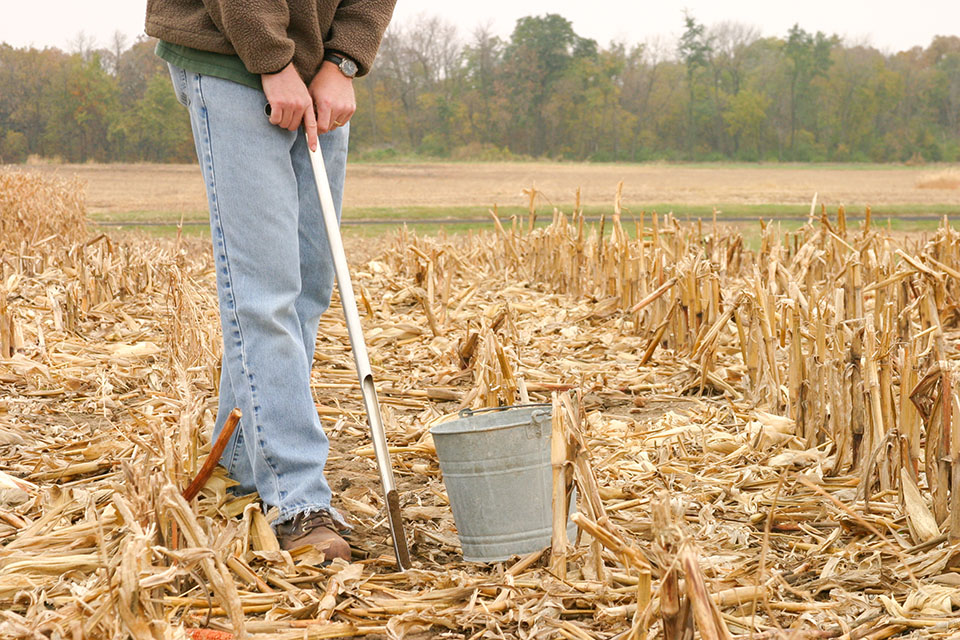
(Photo: Iowa Soybean Research Center / Greg Tylka)
Sample now for soybean cyst nematode
September 28, 2023 | Kriss Nelson
“Not knowing if you have soybean cyst nematode (SCN) in a field and at what levels, is like wondering if you have high blood pressure but never getting it checked,” says Greg Tylka, Iowa State University Morrill Professor and director of the Iowa Soybean Research Center.
The pest robs Iowa soybean farmers of more than 50 million bushels per year.
Now is the time to consider soil sampling for SCN. Tylka recommends sampling fields where soybeans will be grown in 2024.
“Fall soil sampling will identify SCN-infested fields and is the first step toward effectively managing SCN,” he says.
Tylka provided these sampling guidelines:
- Using a soil probe, not a spade, collect soil cores, which should be about 8 inches deep.
-
Collect 15 to 20 soil cores from every 20 acres. The more soil cores collected from smaller areas, the more accurate the results.
-
Soil cores should be collected from agronomically logical areas or management zones in the fields.
-
Combine all soil cores representing a sampling area and mix well, then pour the mixed soil into a soil sample bag or plastic bag.
-
SCN samples can be submitted to Iowa State University’s Plant and Insect Diagnostic Clinic, Room 2445 of the Advanced Teaching and Research Building, 2213 Pammel Drive, Ames, Iowa 50011. For questions on submitting samples, call 515-294-0581 or email: pidc@iastate.edu. More information can be found visiting here.
-
Private soil-testing labs can also process samples for SCN. Information on those labs can be found by visiting the SCN Coalition’s SCN state testing labs site.
Managing SCN
The first step to managing SCN is knowing if the pest is present in the field and at what levels.
Other management steps include:
- Keeping a corn-soybean rotation.
- Using soybean varieties with the Peking SCN resistance. After the rotation year of corn, Tylka advises alternating and growing soybean varieties with the PI 88788 SCN resistance.
- Utilizing a nematode-protectant seed treatment.
“Seed treatments have had variable effects among the different products and fields but at times have provided a significant yield boost,” says Tylka.
The SCN Coalition
The SCN Coalition, funded by the soybean checkoff, encourages farmers to “take the test and beat the pest.”
The site includes an SCN Profit Checker and links to state coalition partners and other resources to increase soybean growers’ profit potential and realize higher yields.
Although 2023 research results are not in yet, Tylka expects high end-of-season SCN egg numbers.
“SCN thrives in hot, dry soil,” he says. “Along with the high SCN egg numbers, I expect to see low soybean yields in our experiments. And just like our research plots, I expect Iowa farmers will experience high SCN numbers and lower-than-expected yields from fields infested with SCN.”
Research continues on Iowa farms and fields to determine how best to manage the pest. See
this link for additional information on that research.
Back